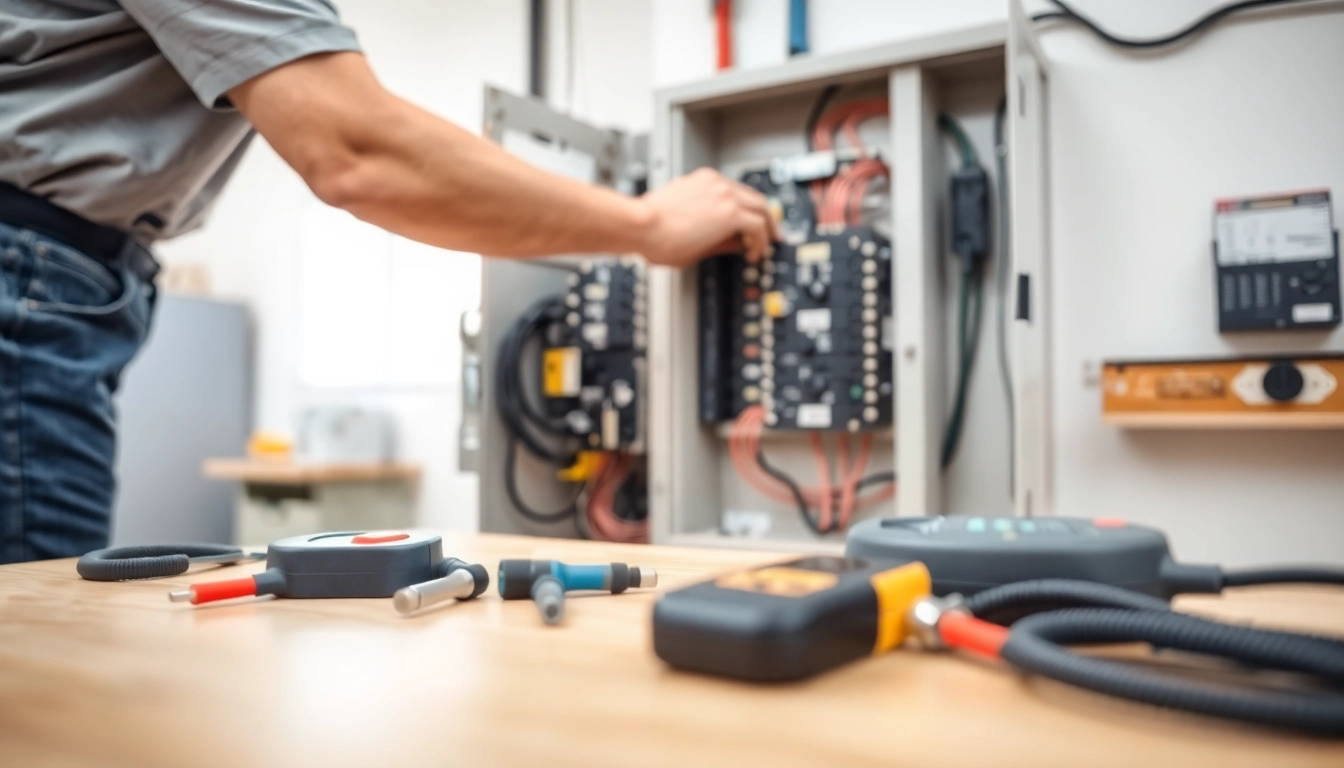Understanding Electrical Panels
What is an Electrical Panel?
An electrical panel, also known as a breaker panel or service panel, serves as the central hub for distributing electricity throughout your home. This critical component’s primary function is to receive electricity from the utility company and distribute it safely to various circuits in your home. Essentially, it acts like a traffic controller, ensuring electrical flow is managed and directed correctly, allowing your devices and appliances to function safely and efficiently.
Components of an Electrical Panel
Electrical panels consist of several key components:
- Main Breaker: The main breaker serves as the on/off switch for the entire electrical system and provides overcurrent protection.
- Circuit Breakers: These are safety devices that automatically shut off electrical flow to circuits when there is an overload or short circuit, preventing potential fires.
- Bus Bars: Conductors that distribute electricity from the main breaker to the individual circuit breakers.
- Neutral Bus Bar: A connection point for the neutral wires from various circuits.
- Ground Bus Bar: A connection point for the grounding wires, which helps to prevent shock hazards.
Importance of Electrical Panels in Homes
Electrical panels are vital for the safe and effective functioning of a home’s electrical system. They exist not just as a point of distribution but also as a safety mechanism. An outdated or malfunctioning panel can lead to dangerous situations, including allowing for electrical fires, equipment damage, and possible electric shock incidents. Regular inspections and timely upgrades of your electrical panel ensure you maintain safety standards and accommodate your growing energy needs, which is particularly relevant in today’s energy-conscious society.
Signs You Need an Upgrade
Flickering Lights and Power Fluctuations
One of the most common signs that your electrical panel may need an upgrade is the occurrence of flickering lights. When lights flicker or dim unexpectedly, especially when large appliances turn on, it can indicate that your panel is struggling to supply adequate power due to overloads. Power fluctuations can be more than an annoyance; they signal potential issues within your electrical system that could lead to further complications if not addressed promptly.
Age of Your Electrical Panel
The age of your electrical panel is a crucial factor in determining whether an upgrade is necessary. Most electrical panels have a lifespan of around 20 to 30 years. If your panel is approaching or has surpassed this age, it may be more prone to issues and might not safely accommodate modern electricity demands. Upgrading an older panel can not only enhance safety but also increase the efficiency of energy consumption in your home.
Increased Electrical Loads
If you’ve recently undertaken a renovation, added more electrical appliances, or moved to a larger home, you may need to upgrade your electrical panel. Increased electrical loads can easily exceed the limits of an outdated panel, resulting in overheating, tripped breakers, or worse. Understanding your current and future energy needs is essential in determining if an upgrade is required.
The Upgrade Process Explained
Initial Assessment by Experts
The first step in upgrading your electrical panel involves an initial assessment conducted by qualified electrical professionals. They will compare your current setup with your needs, checking the amperage and the condition of the existing components. This evaluation includes visual inspections as well as possible checks for code compliance to ensure your installation meets local standards.
Choosing the Right Panel for Your Home
Once the assessment is complete, the next step is choosing the appropriate electrical panel. Factors that play a key role in this decision include the total amperage needed based on your home’s demands, planned future expansions, and adherence to any local building codes. It is crucial to select a panel that meets not only your current needs but also provides room for future electrical growth.
Installation Steps and Timeframe
The installation of an electrical panel is a comprehensive process that includes the following steps:
- Shut Off Power: The power will be turned off at the main breaker to ensure safety during installation.
- Remove the Old Panel: The existing panel will be taken out, which may involve disconnecting wires from the old breakers.
- Install the New Panel: The new panel is mounted securely and connected to the home’s wiring system.
- Reconnect Wires: Wires from existing circuits are reconnected to the new panel, ensuring that all connections are secure and correctly matched.
- Test the New System: Once everything is hooked up, running tests help confirm the system is functioning properly before the power is restored.
The entire process typically takes between 4 to 8 hours depending on the complexity of the installation and the number of circuits involved.
Cost Considerations
Average Costs for Electrical Panel Upgrades
Upgrading an electrical panel can range significantly in cost, with the national average typically falling between $1,000 to $3,000. Factors influencing this price include the amperage of the new panel, labor costs in your area, and additional electrical work required during the installation. While the initial cost might seem daunting, investing in a new panel can lead to enhanced safety and efficiency, resulting in long-term savings.
Factors Influencing Upgrade Costs
Several factors contribute to the overall cost of an electrical panel upgrade:
- Panel Type: Choosing a standard or high-efficiency model can impact overall costs.
- Amperage Rating: Panels with higher ratings will usually be more expensive.
- Labor Costs: Costs may vary significantly depending on local labor rates and the electricians’ experience.
- Permits and Inspections: Local regulations might require obtaining permits, which can add to the expense.
Financing Options Available
For homeowners facing that initial outlay, several financing options are available to ease the burden. Many electricians offer payment plans or financing through third-party lenders, which allow payments to be made over time rather than in a lump sum. Additionally, government grants or local programs may exist to assist homeowners with the costs of upgrading electrical systems, particularly if the upgrade contributes to energy efficiency improvements.
Choosing the Right Electrician in Clearwater
Qualities to Look for in a Service Provider
Selecting the right electrician is paramount for achieving a successful panel upgrade. Here are some essential qualities to consider:
- Licensure and Insurance: Always choose licensed and insured electricians to ensure compliance with local regulations and protection from potential liabilities.
- Experience: An electrician with extensive experience in panel upgrades is likely to be more knowledgeable about potential pitfalls and best practices.
- Reputation: View reviews and testimonials to gauge the quality and reliability of their work.
- Free Estimates: A reputable electrician will offer a free assessment and estimate before work begins, giving you clearer insights into costs.
Questions to Ask Before Hiring
Before hiring an electrician, consider asking the following questions:
- What is your experience with electrical panel upgrades?
- Can you provide references from past clients?
- How will you ensure safety and compliance during the installation?
- What warranties do you provide on the workmanship and materials?
Reviews and Testimonials from Previous Clients
Reviews and testimonials provide invaluable insights into the electrician’s reliability and quality of work. Check independent review sites, social media platforms, and local community boards for feedback. Positive reviews can reassure you that you are making a sound choice. Look for specific mentions about the electrician’s promptness, professionalism, and quality of work related to electrical panel upgrades.



